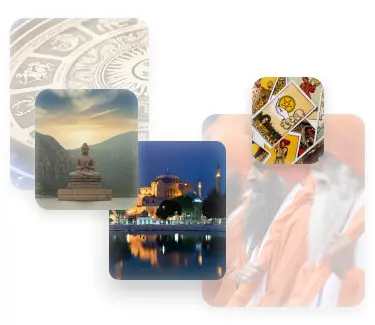It is most common in India. Followers of the doctrine live in the United States of America, Australia, the Far East and European countries.
Jainism
Jainism is one of the oldest Dharmic creeds in the world.
Due to strict rules and constant austerity, Jainism has taken a central place among the religious teachings of India.
There are more than 5.5 million followers.
Jainism originated in the 9th-6th centuries BC.
The media believe that the problems raised in Jainism – inequality, violence, the relationship between man and nature are relevant to this day.
Skeptical attitude is caused by the spiritualization of all living things. Insect life is valued on a par with human life. This is very inconvenient in modern realities, since any act of negligence or inattention can lead to murder and violence against an innocent soul.
A brief history
The religion of Jainism originated at the same time as Buddhism.
The founder of the religion is the religious teacher Vardhamana.
For the first 30 years he led the lifestyle of a layman, and then went wandering. Vardhamana spent 12 years wandering, subjecting himself to asceticism – the practice of achieving spiritual goals through exercises in self-discipline, self-restraint, self-denial and self-torture.
Vardhamana spread his teachings among people, gathering companions around him. The assembled community consisted of soldiers, merchants, farmers and believers. For his merits, people called Vardhamana Gina – “winner” and Mahavira – “warrior”. From the word “Gina” came the name of the religion – Jainism.
The disciples of Vardhamana claim that he was one of the 24 tirthankaras – a spiritual mentor, a saint.
After Vardhamana’s death, the community split into two parts: Svetambaras and Digambaras. The reason for the split is each other’s rejection of the established rules.
To this day, the enmity between these two directions continues. They differ from each other in customs, literary tradition, and rituals.
The Essence of Religion
The essence of Jainism is spiritual perfection and non-harm to the living.
The goal of Jainism is to know the human soul, its nature and abilities.
It is believed that when the soul is freed from samsara, it attains eternal bliss. To achieve this, it is necessary to apply ascetic practices.
There are three values in Jainism, with the help of which the soul is freed from constant rebirth and reaches moksha: absolute knowledge, correct perception and behavior.
The Precepts of Jainism
There are five commandments in Jainism:
Ahimsa is a principle that includes a ban on the manifestation of moral and physical violence.
Satya is truthfulness. You need to be sincere in your words and thoughts.
Asteya – the prohibition to take someone else’s. There should be no desire to take something that does not belong to you.
Brahmacharya – spiritual perfection should be above carnal love.
Aparigraha – the soul must be free from the accumulation of material goods.
Rites
Rigid performance of rituals is more common for monks. But laymen also perform some rituals:
Samayika is a meditative practice. It is aimed at improving equanimity in relation to the outside world. The duration of the practice is 48 minutes.
Pratikramana is a rite of repentance for committed mistakes, bad deeds. It is the reading of a mantra, followed by a transition to meditation.
Pumvasana is a ceremony dedicated to the birth of a child. The ritual ensures an easy birth and a further happy life. Accompanied by prayers and taking a decoction of herbs. During childbirth, Ambika is invoked. After three days, the guru performs the ritual of worshiping the sun and moon. On the 6th day they pay honors to the goddesses – warrior mothers.
Holidays
Major celebrations holidays in Jainism:
Feast of Mahavir. Usually celebrated in March-April. It is celebrated in honor of the memory of the birth of Vardhamana-Mahavir. On this day, believers gather to listen to the teachings of Mahavir, arrange solemn processions.
Paryushana is the period of fasting. The most significant period in the religion of Jainism. Dates fall in August-September. This period contributes to the increase of spirituality. People repent of their sins to cleanse karma.
Diwali. The holiday is dedicated to the day when Mahavara achieves mokosha. Celebrated in late October-early November. During this period, people fast, give gifts to each other and set off fireworks.
Holy places
The holy places of Jainism are connected with the history of the formation of the doctrine. All of them are located in India.
Vaishali is the city where Mahavira was born. It is located on the river Gandak. A memorial was erected in the city in honor of the memory of Mahavir. In 1956, the Institute of Jainology was built.
Rajgir is an ancient city in the state of Bihar. The place is sacred because here Mahavira preached his creed. The city has a large concentration of Jain temples.
Pavapuri is a holy city located in the eastern part of India. According to legend, it was in this place that Mahavira reached nirvana. Also in this city is the temple of Jalmandir – a popular place of pilgrimage.
Mount Parasnath is a sacred place in Jain history. Located in the state of Bihar. On this hill, 20 tirthankaras achieved nirvana.
Biography of the creator
The holy scriptures mention Mahavira. He is the founder of Jainism.
Born in 599 BC in Magadha. At birth, he received the name Vardhamana.
He had a decent education, was distinguished by strength and bravery. He lived a worldly life for 30 years. But after the death of his parents, he joined the ascetic worldview and left to wander.
Mahavira devoted 12 years of his life to meditation, asceticism and the search for truth. He achieved nirvana, enlightenment of the soul and began to create a community around himself, which could include representatives of all varnas (social classes). He advocated equality of people, regardless of their social status.
Mahavira’s teachings were based on self-improvement, not on faith in gods.
At the age of 72, Mahavir’s earthly journey ended in the city of Pava. But before his death, he managed to read the last sermon to his disciples.
Modern Leaders
Modern representatives of Jainism, recognized all over the world, are rarely mentioned in the media.
One of the significant figures in Jainism is Acharya Vidyasagar. He is a representative of digambaras – naked ascetics. He is known for his philosophical statements, long meditative practices and rigid asceticism. He devoted most of his life to religious activities in the Bundelkhand region.
Scandals
In ancient times, India was subjected to constant attacks.
In 1001, the Turkic emir Mahmud Ghaznevi made the first invasion of India. The campaign was completed in favor of Ghaznevi. The Indian Rajah Jaipal and his army were defeated.
The conquered territories were subjected to religious cleansing. Mahmoud Ghaznevi ordered the persecution of representatives of temples and believers, including those professing Jainism.
Traditional temples were destroyed, all treatises were burned. This event was the beginning of the persecution of followers of Jainism.



 RU
RU
